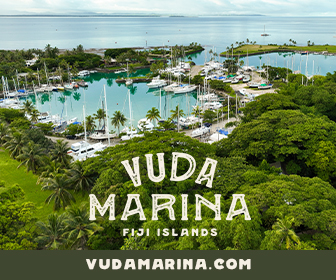South Pacific: Sailing from New Zealand to Fiji out of Season
Sailing from New Zealand to Fiji is usually undertaken in late April, May or even early June. Cruisers Stephanie Jones and Clive Carrington-Wood bucked the trend and left Opua, New Zealand in late March 2024, heading to Vuda Marina in Fiji. They experienced mostly good sailing conditions as Stephanie outlines in this report which is published courtesy of the Bluewater Cruising Association.
Published 3 months ago
Climate Change Report – New Zealand to Fiji
This article has been provided courtesy of the Bluewater Cruising Association and originally appeared in Currents.
It was written in response to the Environmentally and Socially Responsible Cruising Working Group’s (ESRC) request for Climate Reports from Bluewater Cruising Association members cruising in international waters. Stephanie Jones and Clive Carrington-Wood sailed Happy Spirit II, an Ocean 60, from Opua, New Zealand to Vuda Marina, Fiji, from March 23 to April 8, 2024. Stephanie wrote this report on June 5, 2024.
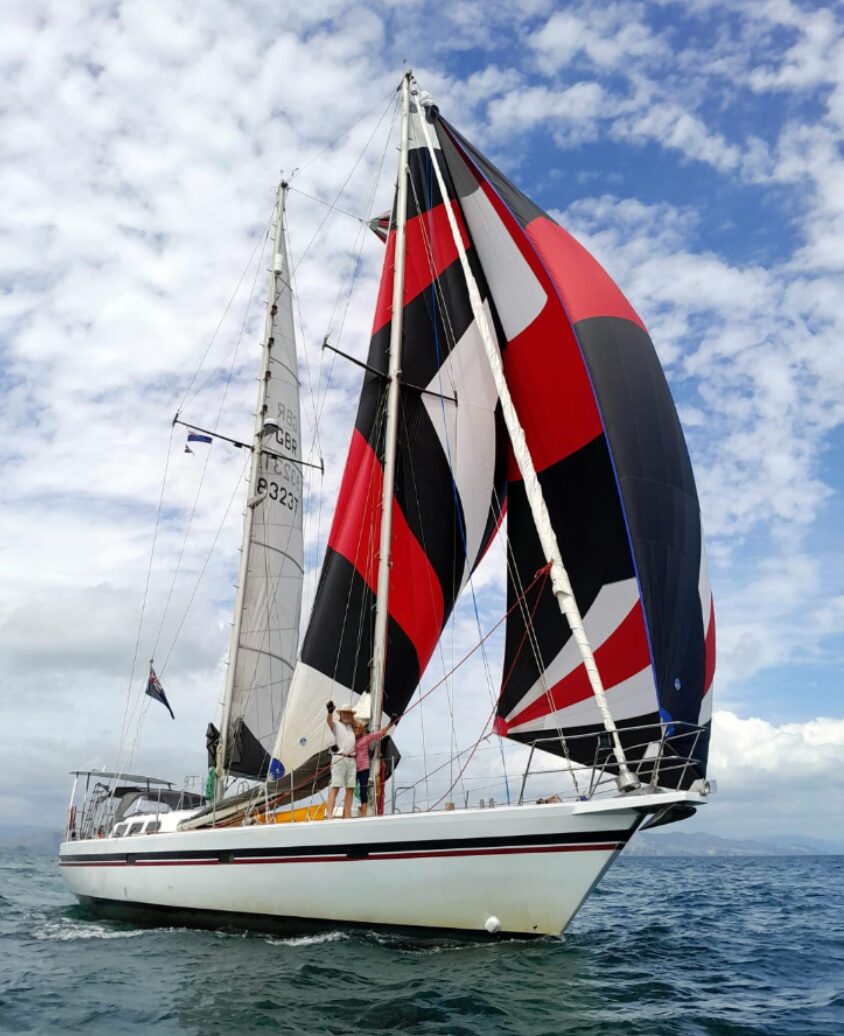

Weather differences from those expected
We decided to sail from New Zealand to Fiji in late March due to the availability of crew, most of whom wanted to reach the destination in early April in order to return to the UK/Europe. We canvassed friends in Nelson Marina, during our voyage up the east coast to the Bay of Islands, at the Russell Boating Club, and among the yachting suppliers/services at Opua port. The consensus of opinion was universally that March was far too early to depart. We were warned that it was almost inevitable that we would hit a major cyclone and incur serious damage, and that everyone was waiting for late April, May, or even June. Indeed, we were only the second yacht to arrive in Vuda when we entered Fiji in early April, and the vast majority of boats are arriving now, in early June, for the purposes of cruising. Those arriving early came for work to be done rather than sailing. Many boats are now departing to cruise around Fiji or visit other islands – but not until the time of writing. Contrary to what we expected, the weather has mostly been good for sailing over these last two months, with some rain and wind but no major storms. Fellow yachties in the marina said that last year they were warned of a major named cyclone during the November-April cyclone season, but this turned out to be only 30 knots of wind.
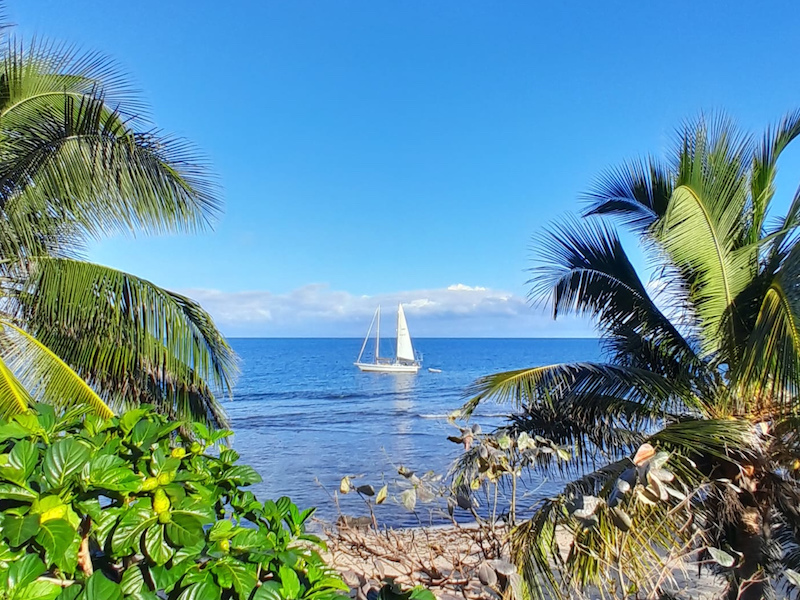

Pollution
It was shocking to see extensive pollution on even the most deserted beaches in both Tonga and Fiji: discarded extruded plastic drinks bottles, cans, plastic snack wrappers, decaying fishing floats, abandoned bits of sailing and fishing gear. During the voyage, we often saw garbage floating around, and even some dead fish.
We were extremely careful about sorting out recyclable waste on our voyage, only disposing of organic vegetable waste in the sea. But on arrival in Tonga and Fiji, we found that there was no effort to separate different kinds of waste (unlike New Zealand, which has dozens of categories of waste), and it would seem that passenger ferries and fishing boats do not adhere to rules about not throwing non-degradable waste into the sea, to be washed up on the beaches, etc. Even the marinas were untidy and garbage-ridden. The marina staff were conscious of abandoned discarded packaging and large pieces of marine detritus, which adversely affected the heavy-lift machinery bringing boats ashore, and also filled many on-land cyclone pits, but these pieces of garbage were just moved a short distance away and cleared from the immediate vicinity when directly in the way of putting boats up on the hard, or placing them in the pits. In most cases, the garbage was not permanently removed. The garbage disposal bins were used for all kinds of waste. Efforts to find recyclable waste bins by many environmentally conscious yachties from all over the world came to naught.
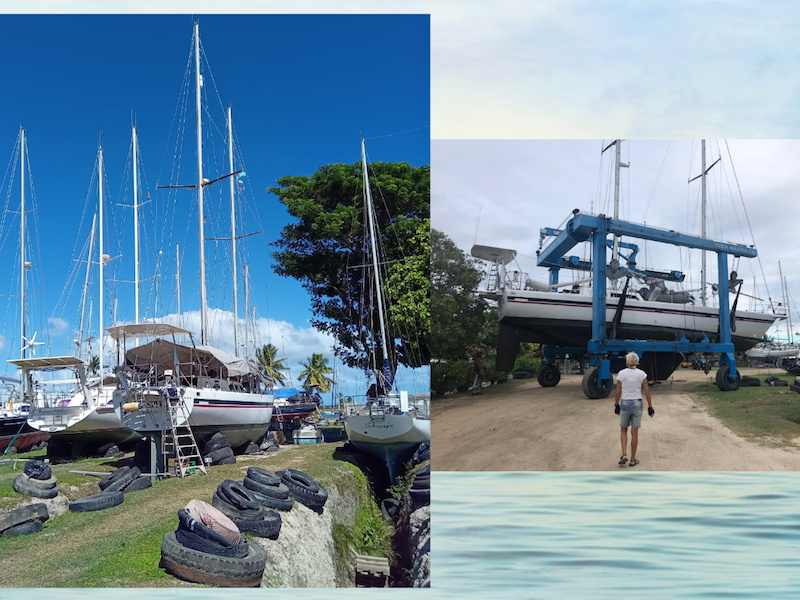

Fisheries
The availability of fresh fish in both Tonga and Fiji was disappointing: it was in short supply and relatively expensive (extremely so in New Zealand). Even in fishing ports such as Nelson, the local fishing company’s products were unaffordable. Imported frozen and canned fish seemed to be more popular and cheaper in Fiji. Private fishing is more popular in New Zealand than buying from fishmongers. I bought frozen fish in Fiji, but it had to be boiled for a long time – it was so tough and old, but was the only fish available in an otherwise well-stocked supermarket. Imported seafood was very expensive but more easily available. On menus the fish was generally more expensive
Coral Reefs
The best coral and most extensive fish population that we saw was at Minerva Reef, an underwater caldera of a volcano. This is probably because so few yachts call in there to anchor. It had clear water, was garbage-free, and was teeming with fish and coral, like a tropical fish tank on a big scale. By contrast, Tonga was less impressive (even when taking the dinghy to a reef and snorkeling off). There was extensive coral bleaching, especially in Fiji. The size of fish also looked a lot smaller. We attended a lecture presented by a marine conservation NGO in Fiji, where they complained of coral bleaching and of being underfunded. Many of the volunteers were young foreigners looking for practical experience.
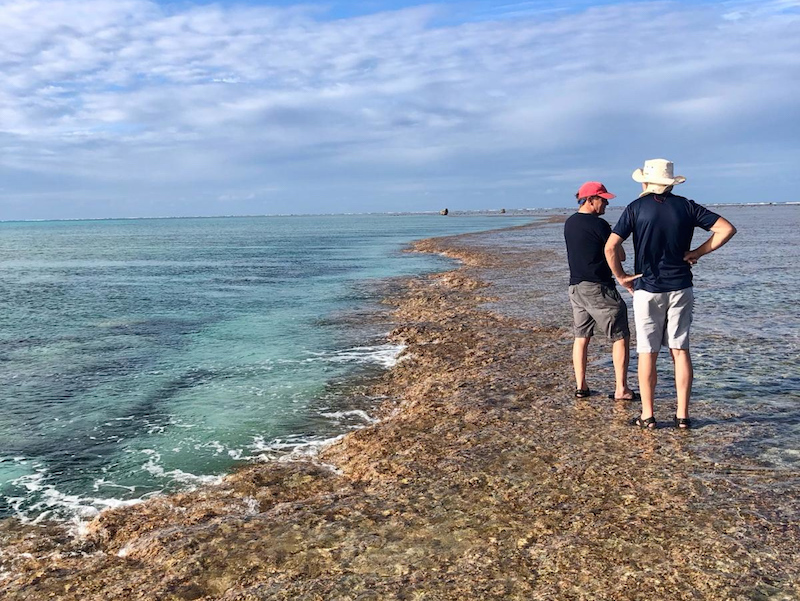

Ocean Temperatures
Ocean temperatures were very warm, even in April, when they were not expected to be so. This was in contrast with New Zealand where, even in North Island, it was too cold to swim except on days of very warm weather. The weather was very hot on arrival in Tonga and Fiji and swimming (except in the captive water of swimming pools) was not refreshing.
Yachts arriving from New Zealand who frequently visit Fiji said the air temperature was much hotter than usual and the sea was hotter too. Fiji locals said that in May it would cool down, but in June (except for a few days of rain) both air and sea temperature are warm – near 30°C by midday, although down to 22°C at night and early morning. The sea temperatures still seem hot, but I have only been swimming in fairly shallow water. June is expected to be a lot drier than it has been so far.
Changes in weather – changing routes
We didn’t change our route very much, which was fairly direct. We sailed the 771 miles from Opua to Minerva Reef in five and a half days and 515 miles from Tonga to Fiji in three and a half days (Minerva Reef to Tonga in two and a half days). The most miles in one day was 183 and we achieved a maximum of 12.9 knots and an average speed of 7.2 knots under sail.
We were under motor only 10-15 per cent of the voyage. Overall, we covered 1,150 miles in 11 days of sailing, from Latitude S35° to S17°. This was frequently at odds with many of the weather forecast services we consulted – sometimes as many as five or six different ones and mostly ‘PredictWind’, which we received through IridiumGo. We found this service expensive, more complicated and not as reliable as Starlink. The forecasts we consulted looked good as there were only a few variations between the various sources; unfortunately the weather rarely matched the forecasts accurately.
More wind (which was nice for us sailing) when forecasting calms, but less wind and from a different wind angle when we were expecting trade wind reaching. In general, the weather was better suited for sailing than was forecast, but it meant that we had to sail a slightly different route according to the conditions and not plan too far ahead. So, the wind speed and wind direction were almost always more or less different from what was forecast. We were expecting stronger winds at times and more periods of being becalmed, but this didn’t happen. The top wind speed recorded in the hourly log was a Force 8 – up to 35 knots – and when our speed dipped below 4 knots (fairly infrequently) we generally went under power.
Timing
As stated above, we were warned of cyclones of scary proportions and this didn’t happen. Most yachties arrived much later than us – they had perhaps arranged their schedules much earlier in the year. From November to April – the cyclone season – being in the pits costs more than twice as much as May-October – the sailing season. But it would seem to be quite safe sailing in April and we plan to sail in the so-called cyclone season as this suits us, allowing for being in the UK and Europe in the Northern Hemisphere summer.
However, it has become almost impossible to obtain affordable insurance – we faced a hike of over 300% in the premium, which we could ill-afford. Many yachties opt for just third-party insurance: the exclusion of named tropical storms and huge excesses before any claim is possible means that full insurance cover is not only prohibitive, but pointless.
Equipment
We installed radar and a forward-scanner, which were very useful for spotting reefs, but still kept a look-out on the bow. We had advanced weather-forecasting equipment, which even when it worked, was unhelpful. We used our downwind sails to achieve our top speeds, but hardly ever used our solent sail, and didn’t need our storm jib. We didn’t need to take in a reef during the whole voyage.
Seamanship skills
It was frustrating noticing the wind picking up and wanting to put up more canvas, just to bring it down five minutes later when the wind died away. This happened very frequently. We often tried to use the wind vane to save on using the auto-helm and hand-steering, but often the wind was too flukey for it to be effective and it needed constant adjustment. Mostly the auto-helm worked, except for a few times when we exceeded nine knots and then hand-steering was quite challenging except for the most experienced and competent crew members.
Changes in communities we visited and how they are responding
The Fijian authorities were very nervous about imported fresh vegetables and meat, due to suspected diseases, which may or may not be related to climate change. The Tongan authorities much less so. There seemed to be no shortage of visiting boats in Fiji, but many yachties complained that the diving and snorkeling was not as good as it once was, due to coral bleaching.
The range of fresh local vegetables available in the markets was disappointing. But this was my first visit to Tonga and Fiji so it’s not easy to comment. Certainly the exodus of locals in search of higher pay and job opportunities has been increasing in recent years, but this may or may not reflect climate change – although the cost of living would seem to be rising, which might be due to more expensive food. This has become highly seasonal with violent price fluctuations, of which many locals and foreigners complained.
Postscript
It should be mentioned that this report reflects my own personal interpretation and experiences. Others have enthused over marine life in parts of Fiji that I have not yet visited, such as Taveuni. Many have traveled much more extensively than me, across many Pacific Islands and may have quite a different view. Mine is just one person’s take on some of the issues raised by the Bluewater Cruising Association and it is intended to add to the corpus of knowledge, even though it is not definitive.
Stephanie Jones
Happy Spirit II
Ocean 60
…………………………………
About The Author
Stephanie Jones is a retired university professor and has written dozens of books and hundreds of articles – but mostly academic, and she is now turning her hand to writing about sailing! She and her partner Clive Carrington-Wood have owned Happy Spirit II, an Ocean 60 schooner built in 1984, for ten years. They have only just dragged themselves away from the gravitational pull and gorgeous sailing in New Zealand, where they bought her (she was built in Poole, Dorset and knows her way around the world). Ex-Navy and schoolboy sailor Clive has traversed the globe by sea. But when he met Stephanie in Malta, her Granada 37.5 was a party boat and hardly ever left the marina. Times have changed!
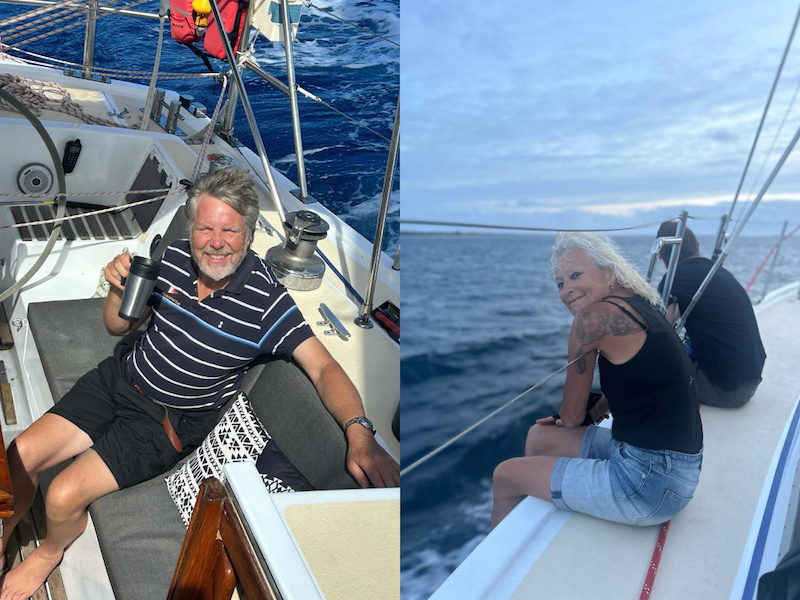

…………………………………
About the Bluewater Cruising Association
The Bluewater Cruising Association is a not-for-profit organization with local Chapters in Vancouver, Calgary and on Vancouver Island that helps aspiring offshore mariners prepare themselves and their boats for cruising beyond protected coastal waters.
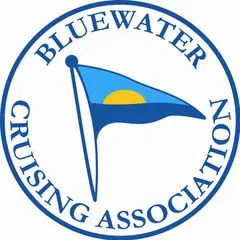
…………………………………
The opinions expressed in this article are the author’s own and do not reflect the view of Noonsite.com or World Cruising Club.
…………………………………
Find out all news, reports, links and comments posted on Noonsite, plus cruising information from around the world, by subscribing to our FREE monthly newsletter. Go to https://www.noonsite.com/newsletter/.
Related to following destinations: Fiji, Lautoka (Vuda Point Marina), Lifuka (Ha'apai), Neiafu (Vava'u), New Zealand, Niuafo'ou Island, Niuatoputapu Island, North Island (New Zealand), Nuku'alofa (Tongatapu), Opua (Bay of Islands), Somosomo, Taveuni, Tonga, Viti Levu
Related to the following Cruising Resources: Circumnavigation, Environment, General, Pacific Crossing, Pacific Ocean South, Routing




